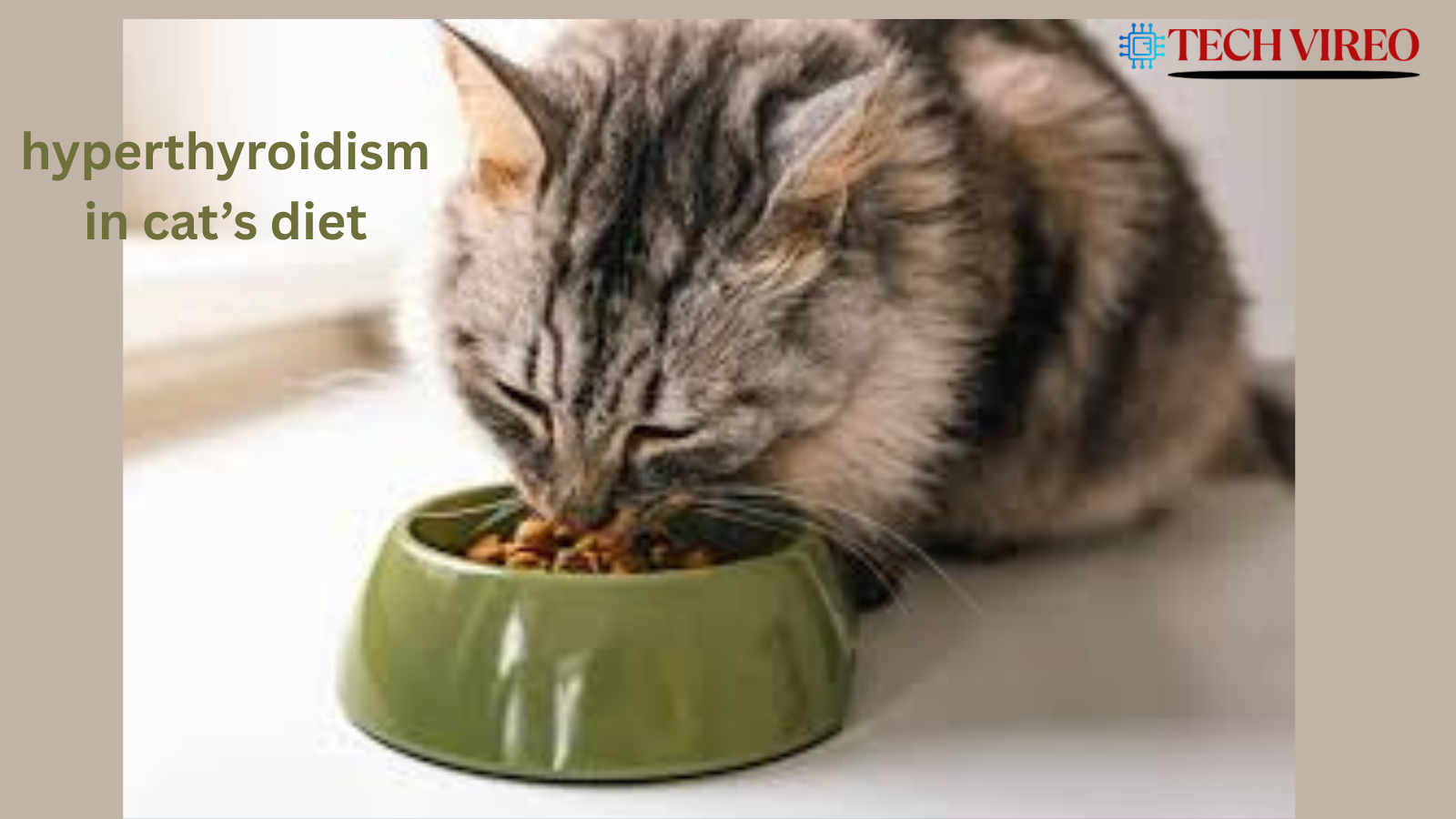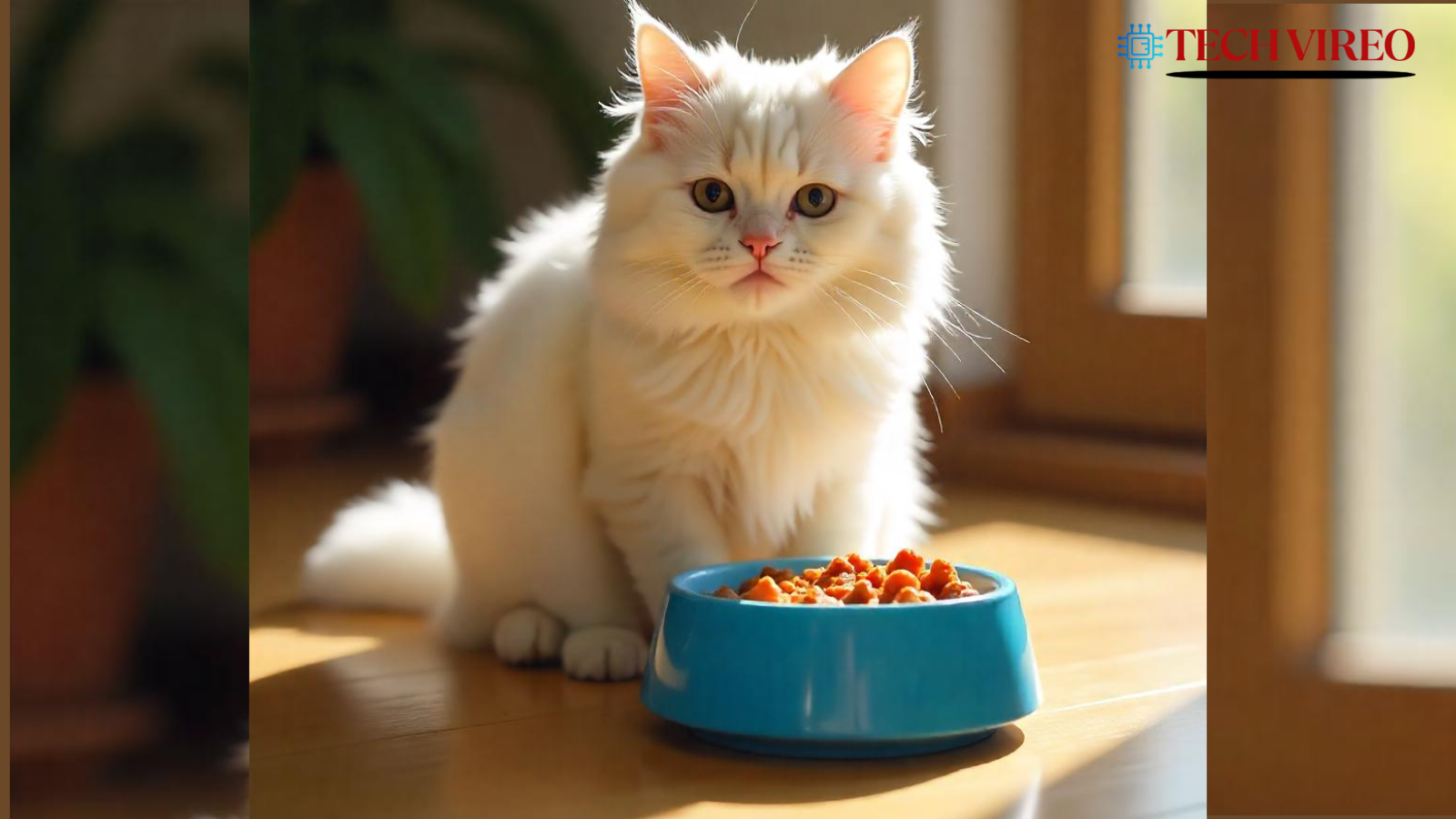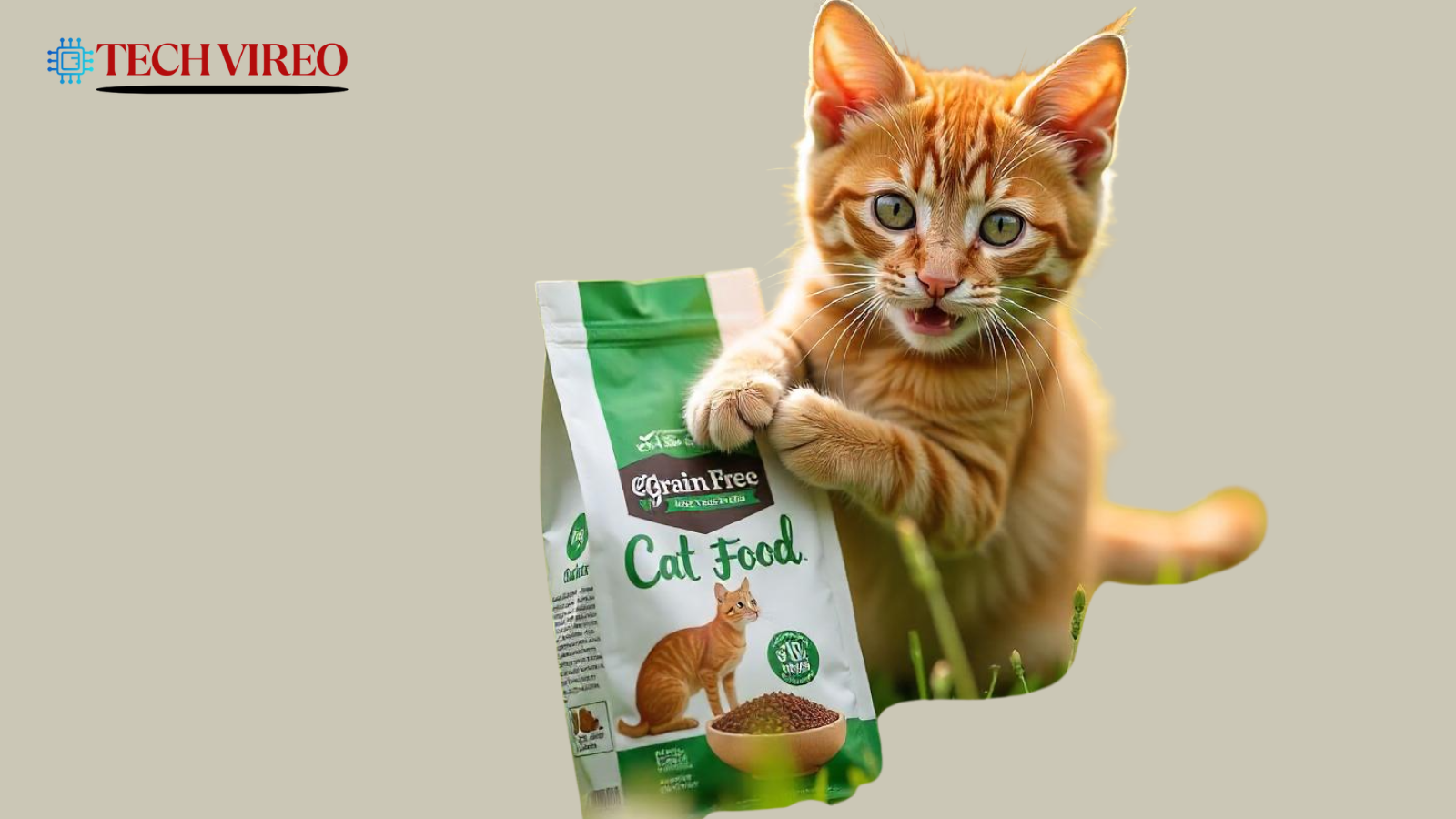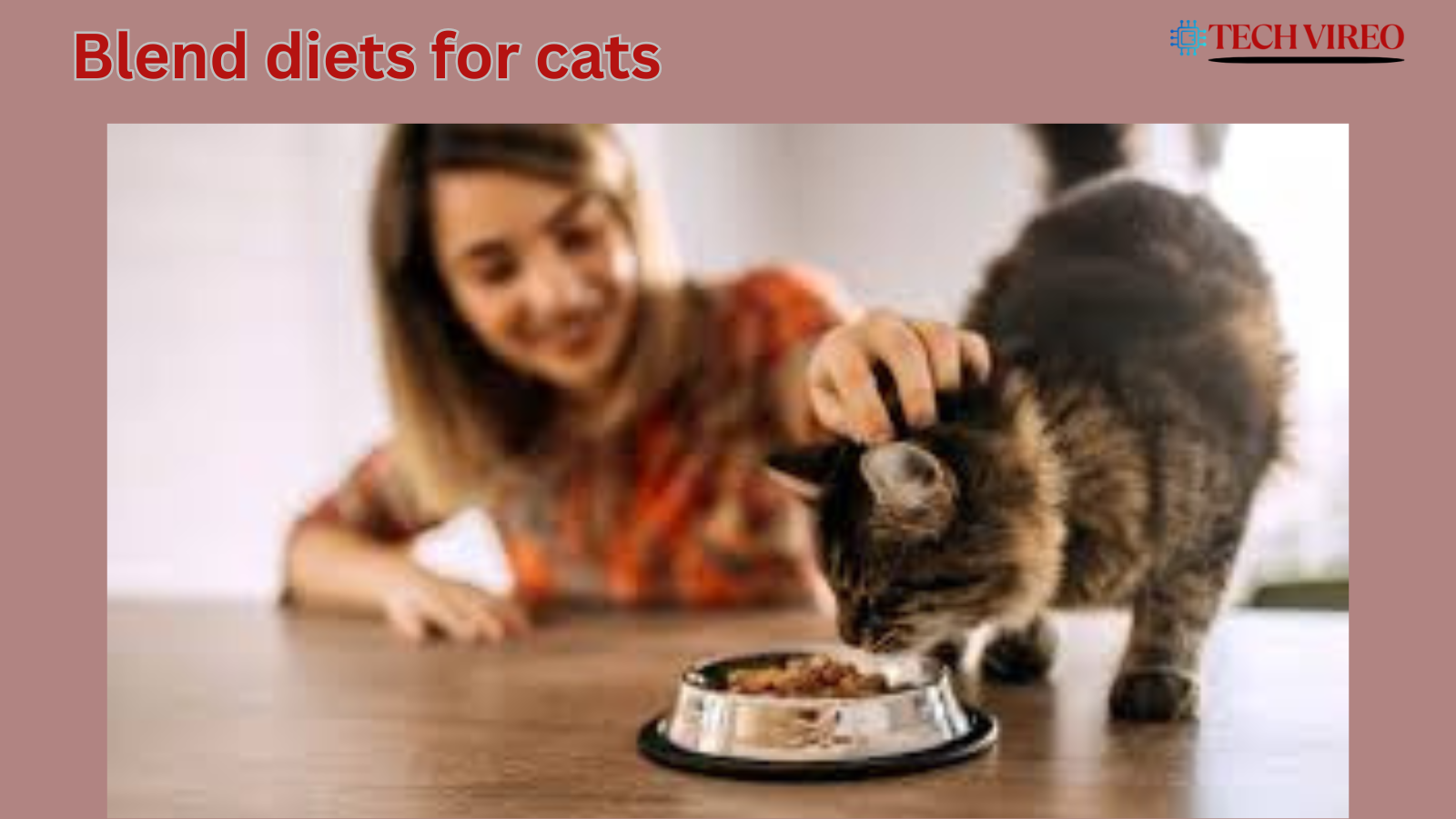What Is Feline Hyperthyroidism?
Hyperthyroidism in cats is a common health issue, especially in older cats. It happens when the thyroid glands in the neck make too much of a hormone called T4. This hormone controls the body’s metabolism, and when there’s too much of it, a cat’s body starts working too fast.
This thyroid imbalance in cats can lead to problems like weight loss, fast heartbeat, and restlessness. A proper hyperthyroidism in cats diet plays a big role in managing this condition. By giving your cat the right food, you can help control hormone levels and support better overall health.
Symptoms and How Food Can Help
Cats with hyperthyroidism often show signs that something isn’t right. The good news? The right food can help manage many of these issues.
Common Symptoms to Watch For
- Vomiting or diarrhea
- Poor coat condition
- Increased thirst and urination
- Sudden weight loss in cats, even when eating well
- Hyperactivity in cats, including restlessness and pacing
These symptoms come from the body working too fast due to high thyroid hormones.
How Diet Makes a Difference
Food affects the way the thyroid gland works. Diets low in iodine help reduce how much thyroid hormone the body makes. This is known as thyroid hormone regulation.
Choosing the best food for cats with hyperthyroidism means focusing on meals that are low in iodine, high in quality protein, and free from harmful additives. . A carefully chosen hyperthyroidism in cats diet can help reduce symptoms, improve energy, and support healthy weight.
Curious how grain-free diets fit into the picture? Read our guide on Is Grain Free Cat Food the Right Choice for Your Pet? to make the most informed decision.
Final Tip
Always work with your vet to choose the right diet. Some cats need prescription food, while others do well on natural diets. A good feeding plan can make a big difference in your cat’s comfort and long-term health.
Prescription vs. Natural Diets | Which Is Right for Your Cat?
Prescription Diets
Many veterinarians turn to commercial formulas like Hill’s y/d for managing feline hyperthyroidism. These prescription diets are crafted to restrict iodine, a mineral that directly impacts thyroid hormone production. Clinical research supports their effectiveness, especially when cats are unable to take medication.
One important factor is exclusivity. Prescription diets like Hill’s y/d must be the only food source—no extra treats, snacks, or human food. When used correctly, these diets have shown consistent results in T4 reduction through diet. For cat owners looking for a straightforward, vet-recommended option, this can be a practical solution.
Natural Diets
A growing number of cat owners prefer a more natural approach. A natural diet for hyperthyroid cats usually means meals that are high in protein and low in carbohydrates, without artificial additives or fillers. Some holistic vets support this direction, especially for cats with food sensitivities or chronic inflammation.
Natural diets focus not only on thyroid control but also on supporting overall wellness. While they may not have the same research backing as prescription diets, many owners report improvements in coat quality, energy levels, and digestion. These diets may be raw, home-cooked, or carefully selected commercial options made with limited ingredients.
Making the Right Choice
Whether you opt for Hill’s y/d or a natural feeding plan, the key is choosing iodine-free cat food and sticking with it. Long-term success depends on consistency and working closely with your vet to create a thyroid-friendly hyperthyroidism in cats diet that’s tailored to your cat’s needs and health history.

Key Nutrients That Support Thyroid Health
Understanding the Nutrients
For a cat with thyroid issues, what goes into the bowl matters just as much as what’s left out. Protein plays a major role, especially in a high protein low carb cat food approach that maintains muscle without overloading energy.
What to Watch
Too much phosphate in cat food can strain the kidneys, especially in older cats. Ingredients like soy in pet food and goitrogens in feline diet—such as broccoli or kale—can also interfere with thyroid function. Keeping these in balance, or avoiding them, can make a significant difference in long-term health.
Sample Diet Plans & Recipes
Real-World Feeding Ideas for Hyperthyroid Cats
Cats with thyroid issues often need meals that are low in iodine but still nutritionally complete. Whether you’re feeding commercial or homemade, balance matters. A balanced hyperthyroidism in cats diet must include high-quality protein, moderate fat, and very limited iodine.
Safe Homemade Plan Example
One simple recipe many vets approve includes cooked chicken breast, small amounts of sweet potato, and a calcium supplement. This kind of iodine-free homemade cat food avoids fish, seaweed, and commercial additives that can increase iodine intake.
Cooked meals should always be reviewed by your vet to ensure nutritional balance. For instance, not every homemade mix contains enough taurine or B vitamins, which are essential for feline health.
Store-Bought Shortlist
Some prescription brands offer ready-made meals that meet thyroid requirements. While not everyone prefers commercial food, these are tested and reliable.
Keep It Simple, Keep It Consistent
Whether you cook or buy, the goal is to stick to thyroid-safe cat recipes without sudden changes or hidden ingredients. Meals should be fresh, portioned correctly, and repeated regularly for stability.
Tips for Switching Your Cat’s Food Safely
Changing Diets Gradually Matters
Cats are sensitive to changes in texture, taste, and smell. When introducing new food—especially for medical reasons—it’s best not to rush the process.
A proper transition to a new hyperthyroidism in cats diet can take 7 to 10 days. Start by mixing a small amount of the new food with the old. Gradually increase the new food while decreasing the old.
What to Watch
If your cat shows signs of stomach upset or stops eating, pause and slow down the mix. A slow food introduction helps avoid digestive problems and food refusal.
Staying on a routine is equally important. A stable feeding routine for sick cats can reduce stress and support better recovery.
For cats with sensitive digestion or recovering from illness, you may also read What Is a Bland Diet for Cats and How Do You Prepare It?
Mistakes to Avoid When Feeding a Hyperthyroid Cat
Inconsistency Can Undo Progress
One of the biggest cat food mistakes with thyroid management is offering snacks, table scraps, or changing food brands without warning. Even a small treat with iodine can throw off the whole plan. These disruptions can cause hormone levels to spike again.
Skipping Vet Input or Misreading Labels
Not all “natural” or “healthy” foods are safe. Some contain seaweed, fish, or soy products that act as thyroid diet dangers. Labels can be misleading. Ingredients like kelp or fish broth sound nutritious but are high in iodine.
Another common issue is guessing rather than measuring portions. Cats with hyperthyroidism often lose weight, so consistent feeding and tracking are essential.
Avoid Unverified Advice
Avoid forums or home remedies not backed by professionals. Your vet should always guide your feeding choices. Online recipes or fads can leave your cat undernourished or worsen the condition.
Keep It Clear and Controlled
The most effective feeding tips for hyperthyroid cats come down to routine, simplicity, and vet partnership. Once a diet is working, stick with it. Change only when advised and never without checking the ingredients.
Conclusion
Monitoring your cat’s health is essential, especially when managing hyperthyroidism. A vet-recommended hyperthyroidism in cats diet tailored to your cat’s needs plays a crucial role in their wellbeing. Regular tracking of your cat’s wellness can help detect early signs of any changes, ensuring their condition is properly managed.
FAQs
Can hyperthyroidism in cats be managed with diet alone?
Yes, feeding a strictly iodine-restricted diet, like Hill’s y/d, can manage hyperthyroidism without additional treatments.
What foods should be avoided for cats with hyperthyroidism?
Avoid foods high in iodine, such as fish, seaweed, and soy products, as they can exacerbate thyroid hormone production.
Is wet or dry food better for hyperthyroid cats?
Wet (canned) food is generally preferred due to its higher protein content and lower carbohydrates, aiding in muscle maintenance.
Can I give treats to my hyperthyroid cat on a special diet?
No, even small amounts of non-prescribed food or treats can disrupt the iodine balance necessary for managing hyperthyroidism.
How quickly does a low-iodine diet affect thyroid hormone levels?
Thyroid hormone levels may begin to decrease within three weeks of starting a low-iodine diet, with significant improvements over a few months.



